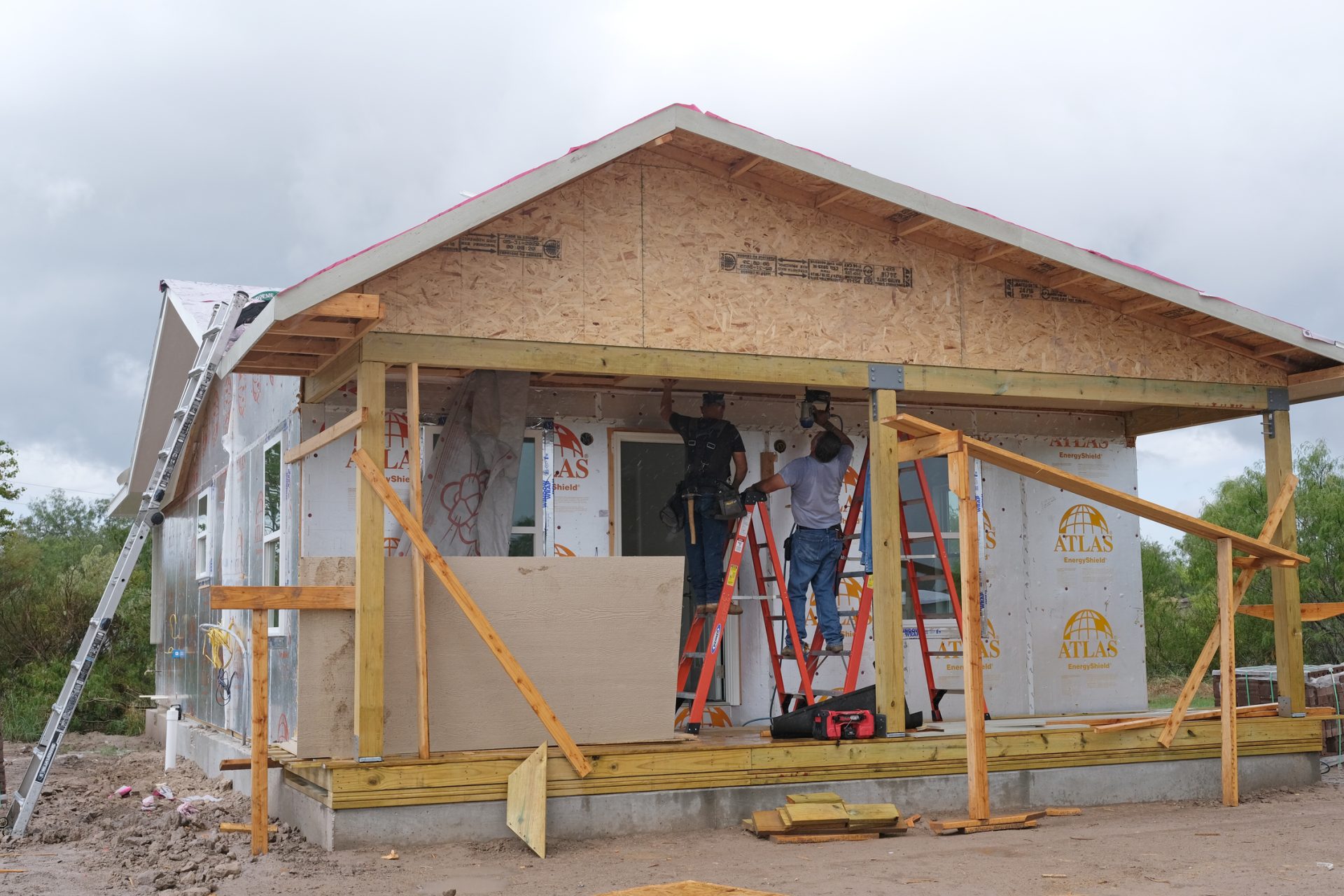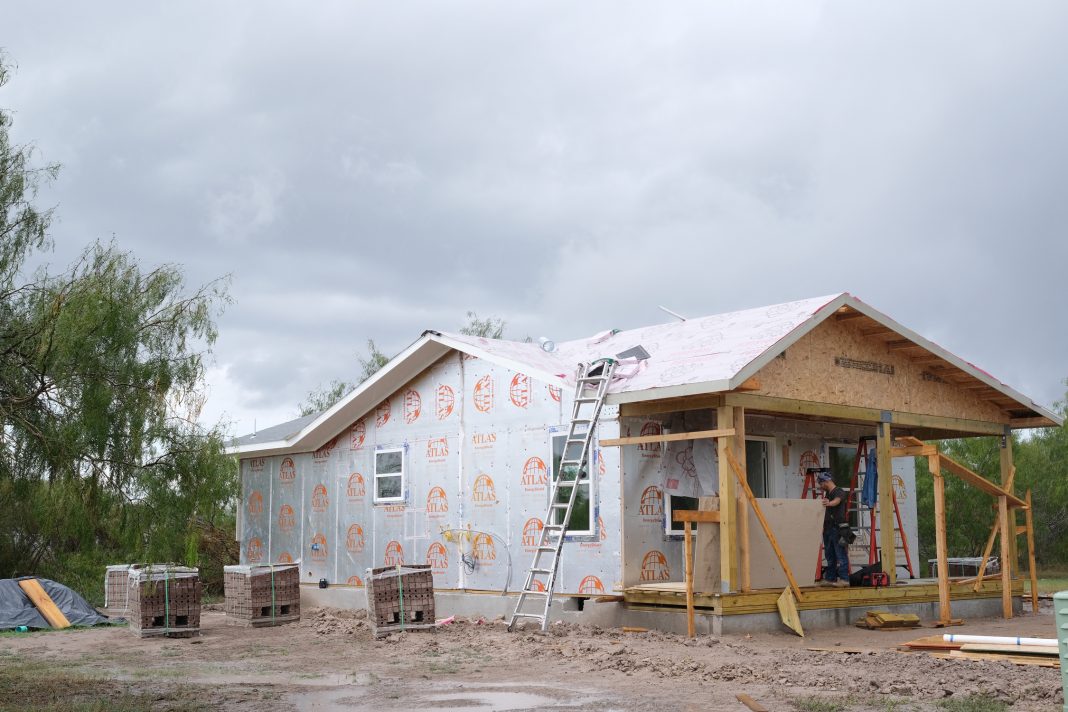Come Dream Come Build, formerly the Community Development Corporation of Brownsville, is one of just five organizations nationwide selected by JPMorgan Chase to receive grants of $3 million each for the purpose of scaling up innovative, climate-resilient, affordable housing models.
The global financial services firm said the money is part of its $400 million, five-year commitment to “improve housing affordability and stability for households of color, particularly in Black, Hispanic and Latino communities.”
In CDCB’s case, the model is MiCASiTA, an idea that grew out of CDCB’s RAPIDO disaster housing program launched several years ago. CDCB Executive Director Nick Mitchell-Bennett said that in light of the ongoing affordable housing “disaster,” the decision was made to retool RAPIDO to full time rather than waiting for a hurricane.
CDCB applied for the $3 million at the invitation of JPMorgan Chase, then went through a rigorous vetting process, including a round of interviews and an in-person visit from a company representative.
“It’s an invitational only kind of thing,” Mitchell-Bennett said. “It wasn’t an open call. That kind of money, they’re very selective. They knew about us. The MiCASiTA model is being watched.”
A $2 million grant from Wells Fargo two years ago helped accomplish that. CDCB, which had the idea for MiCASiTA but no money, used the Wells Fargo grant to “build the system, to build the processes, to really get it up and going,” he said.
“And then we were going to be on our own, which is fine, but then JP Morgan came in and said, OK, let’s help you make sure that this happens,” Mitchell-Bennett said.
JPMorgan Chase and Wells Fargo are “the two big dogs on the porch” in terms of foundations that support innovation in affordable housing, he said.
The JPMorgan grant will allow CDCB to scale up MiCASiTA, a housing-and-lending program that uses modular housing built off site and then delivered to the site, with software that essentially allows homebuyers to design their own houses according to their budget, using real-time data on the cost of materials, land and so forth in order to accurately estimate the total cost.
Solar panels will also be an option for buyers who desire them. The off-site construction and modular aspects makes the MiCASiTA home base sale price 15 percent lower than a “stick-built” home, Mitchell-Bennett said, adding that the plan is to develop a fully functional program in the Rio Grande Valley that can be scaled for “other persistent-poverty communities of color” such as the Mississippi Delta and Pine Ridge Indian Reservation.
“Obviously we want to perfect it here,” he said. “This is home. These are our people here. Our primary responsibility is the people of the Rio Grande Valley and we’re committed to doing that. But we feel like we designed something that we think other people can use.”

So far two MiCASiTA homes have been completed and six more are under construction, Mitchell-Bennett said. The prototype houses are serving for now as model homes and are unoccupied, though they will eventually go on the market, he said.
“They’re just prototype ideas but we now have clients that are in the queue that we’re working with,” Mitchell-Bennett said. We’re not going to heavy marketing. We’ll just going to do kind of word-of-mouth, whisper stuff. We’ll test all of that for about four months and then in May we’ll do a grand opening.”
The other organizations receiving $3 million JPMorgan Chase grants are in California, Florida, New York and the District of Columbia.
As part of JPMorgan Chase’s strategy to combat the housing affordability crisis, the firm is supporting organizations advancing innovative housing models that can be successfully scaled throughout the country,” said the company.
Through testing new models and collecting lessons learned, these commitments aim to increase the supply of sustainable and affordable housing for households of color across the U.S., as well as influence key stakeholders in the housing industry, including the public and private sectors,” said JPMorgan Chase. “This commitment also reflects how the firm is building on previous experience and insights gained through its unique set of business, data, policy and philanthropic resources to help close the housing affordability gap.”
The company noted that “Americans are facing a housing supply crisis, with a shortage of nearly 3.8 million units nationwide,” and that this is taking place against a backdrop of “historically high rents and persistent barriers to homeownership rates for communities of color.”
“In our efforts to advance an inclusive economy, we remain committed to addressing some of the barriers to affordable housing and homeownership to provide family stability and build generational wealth for households of color,” said Abigail Suarez, head of Neighborhood Development for JPMorgan Chase. “More households deserve accessible options to homeownership and now more than ever we need equitable, sustainable solutions that better equip communities with affordable, climate resilient housing.”




